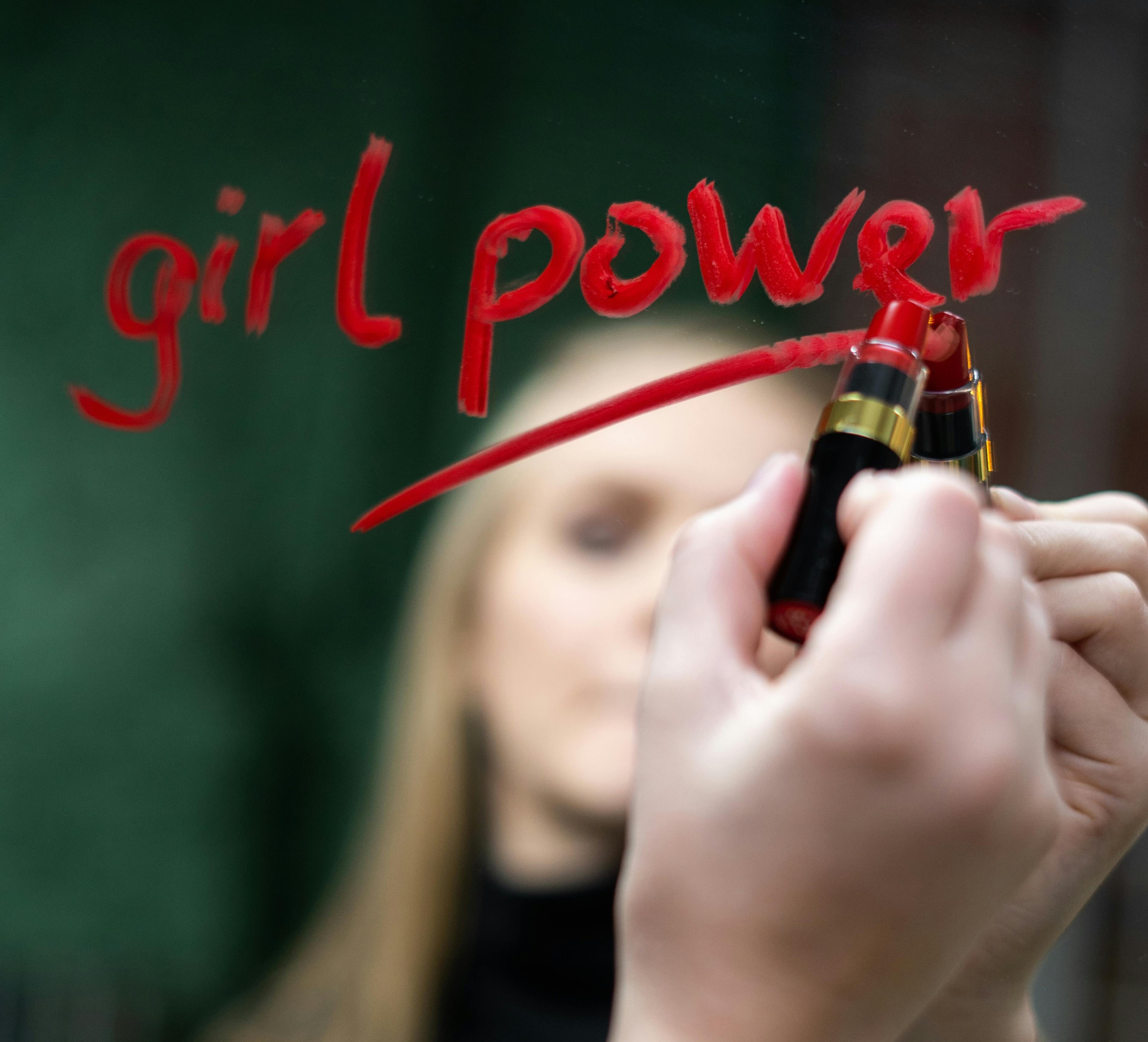After this most recent election, in the midst of the horrifying posts from victorious men shouting “your body, my choice” came another voice — that of our fellow women, claiming that Donald Trump’s victory was a signal to the world that modern feminism had failed.
You’ve probably seen the growing crop of trad-wife influencers promoting a return to “traditional” gender roles. And the men who gleefully celebrate them. These women claim that it’s ok to lean into your inherent femininity and surrender to your male partner, trusting him to lead the way. What’s fascinating about this new wave of influencers is how effectively they’ve been able to tap into the real frustration and fear of women even in my own network who are, quite simply, exhausted.

If you’re a Millennial like me, then you spent your formidable years being told you could have it all, to lean in, and to step into your power. We shouted about the unfairness of calling us bossy when a man would be called ambitious or direct. We climbed the ladder to shatter the glass ceiling, then we watched as our country said a resounding HELL NO to Hillary Clinton in 2016. Was that the beginning? I personally don’t think so, but it certainly exposed a crack that conservatives have been able to exploit in the years since.
I think for many women, the idea of “having it all” doesn’t sound quite as appealing as it once did. But why is that? How has something that once felt like the ultimate freedom now morphed into something more akin to a prison? Let’s break it down.
Modern Feminism is often described as consisting of different waves, each with its own focus and objective depending on where women broadly were in their fight for equality. The progression of the feminist movement is incredibly complex and multi-faceted, but at a high level you can think about the following phases:
- First Wave (pre-1920): Women’s suffrage, obtaining the right to vote
- Second Wave (1960s-1980s): Addressing fundamental inequalities like equal pay, gender discrimination, and reproductive rights
- Third Wave (1990s-2000s): Broadening feminism to include non-white women, who had largely been left behind by previous feminist movements
- Fourth Wave (2010s-now): Increasing intersectionality and a deeper focus on sexual assault with the #metoo movement
With this broad brush we can see how the movement unfolds over time, but always with the same core objective: enabling the full participation of American women in society, a phrase cited in the Statement of Purpose for the National Organization for Women (NOW) when it was created in 1966.
While this may appear to be a simple or even self-explanatory objective, the truth is it was always controversial. In fact, gender was added to the Civil Rights Act of 1964 (which bans discrimination based on race, color, religion, national origin, and sex) by conservative congressmen specifically because they believed that adding sex would prevent it from being passed. That shows us that even in 1964, protecting women under the law was seen as a controversial legislative move.
What’s the point of this history lesson? To demonstrate that while to many the basis of the feminist movement may seem straightforward — and dare I say it, common sense — to many factions, it has always been controversial and they have always been searching for ways to undermine it.

Enter the present era. In the early 2010s, many felt inspired by the idea of being #girlboss and celebrated when Sheryl Sandberg told us to Lean In. But when we tried to “rise and grind” to become She-EOs, all we ended up feeling was burnt out. In recent years the reaction has been to “soften” this drive and accept that we need to strive for some sort of balance in our lives. Mindfulness and meditation have become mainstream (highly recommend meditation btw if you haven’t given it a go), and wellness has replaced ambition as the watch word of femininity.
Is this because women actually don’t like being driven and focused on their careers? I highly doubt it. I think that instead what we saw (or didn’t realize we were seeing) was that the system of our society is simply not set up to enable women to focus on their careers. Especially if they also want to have a family. Maternity leave is still a controversial topic. Women still bear the burden of the majority of housework. And even men in my own network complain that while they want to take on a greater share of childcare, they feel inadequate or sometimes even excluded from Mom chats and Facebook groups.
The system is quite simply not set up to support women in their ambition. It’s no wonder we’re all exhausted! And it’s not surprising that the reaction for many has been to throw up their hands and say enough. I give. I can’t do this anymore.
The wellness movement was perfectly positioned to welcome exhausted women with open arms. And conservatives saw an opportunity too good to pass up. If women were feeling tired and burnt out from striving for their career goals, why did they need modern feminism in the first place? Wouldn’t it feel just as freeing to relinquish control and let someone else take the helm? Someone you theoretically chose and fully trusted?
Not to always be quoting Sex and the City, but this makes me remember the episode where Charlotte decides to quit her job when she and Trey are trying to get pregnant. She accuses Miranda of being judgemental of her decision, declaring that “the women’s movement is about CHOICE”:

And Charlotte’s right! Feminism should be about choice (so much should be about choice…iykyk), but claiming that we as individuals hold the power to freely make those choices when the system is set up to take that authority away from us is unfortunately quite naive at this point.
What we’ve ended up doing is inadvertently serving up formerly feminist women to conservatives on a silver platter. Frustrated women looking for release find wellness, fluidity, and ease within newly minted conservative outlets like Evie, platforms that many probably don’t realize are explicitly created by right-wing groups hoping to subtly shift women towards their side of the table (where they will have dinner ready and serve their husbands dutifully). The illusion that any husband in this mirage will be a caring, non-toxic, protective man is tempting, and one they can project via social media with ease.
Telling these women that they’re stupid or short-sighted isn’t going to get us anywhere (just as calling all Trump voters monsters is pointless and counter productive). I wrote about how surprised I was by how women voted in this last election. I wrongly assumed that the majority of women had felt — as I had — a visceral fear and anger in 2022 when the conservative Supreme Court overturned Roe v Wade. And that the fear would transform into a passionate desire to fight. But instead it looks like large swathes of women decided that the battle wasn’t worthwhile for them anymore. They would rather tap out and look to their “masculine” counterparts to lead them to nirvana.
So where does that leave the rest of us? Fighting the good fight with the deck stacked against us. Continuing to battle as generations of women before us have done for decades. And hopefully with a small warning system built into the back of our minds. While I love the rhetoric around wellness and balance in recent years, I try to remain vigilant about the content I’m ingesting. When it starts to subtly hint at “surrender” — a word that can have lovely connotations and simultaneously sinister objectives — I try to take a second to dig into where the content might be coming from.
Are you interested in hearing more about how I believe women are being sucked into the conservative ecosystem? Comment below if you want more on this.
